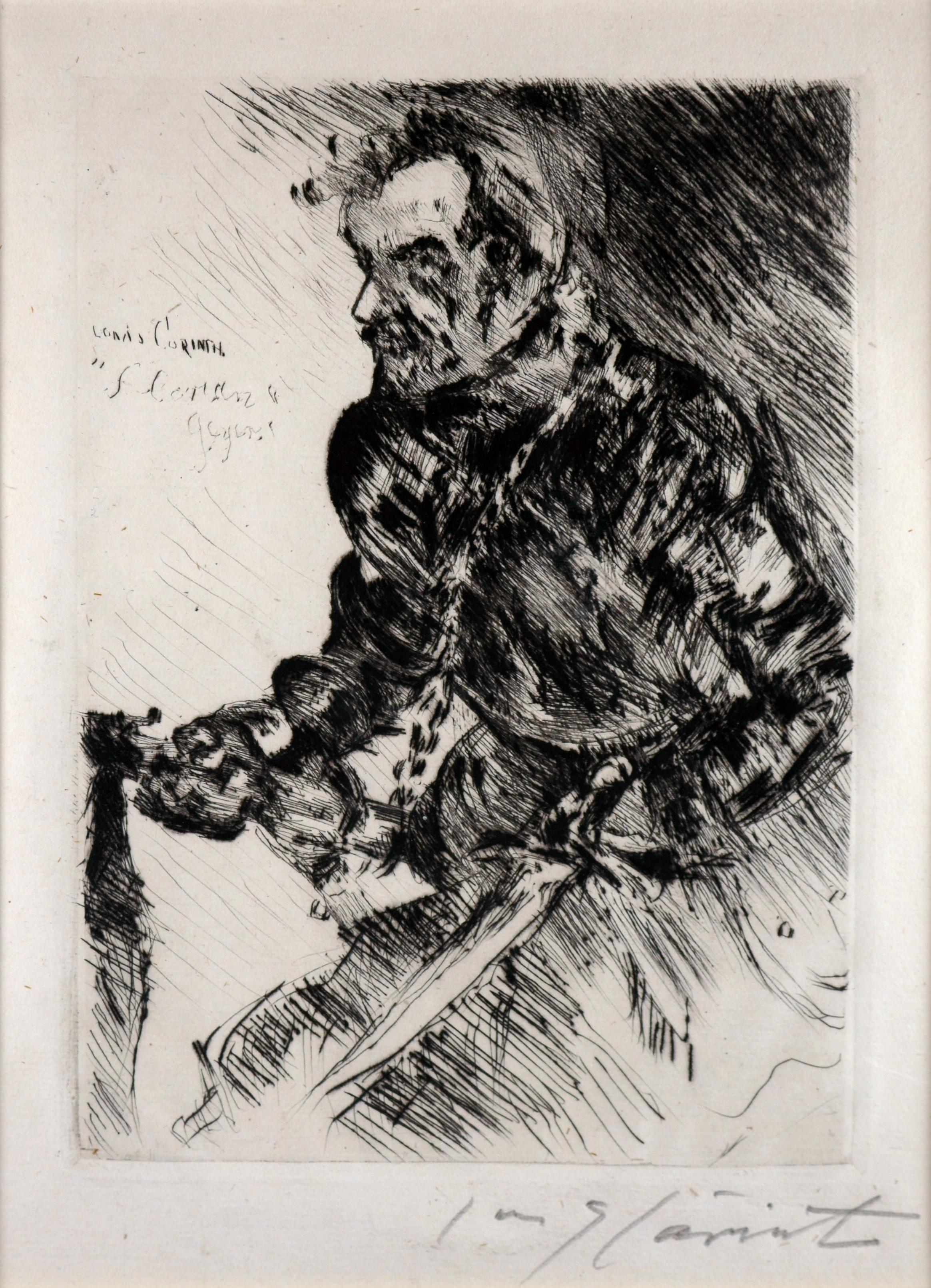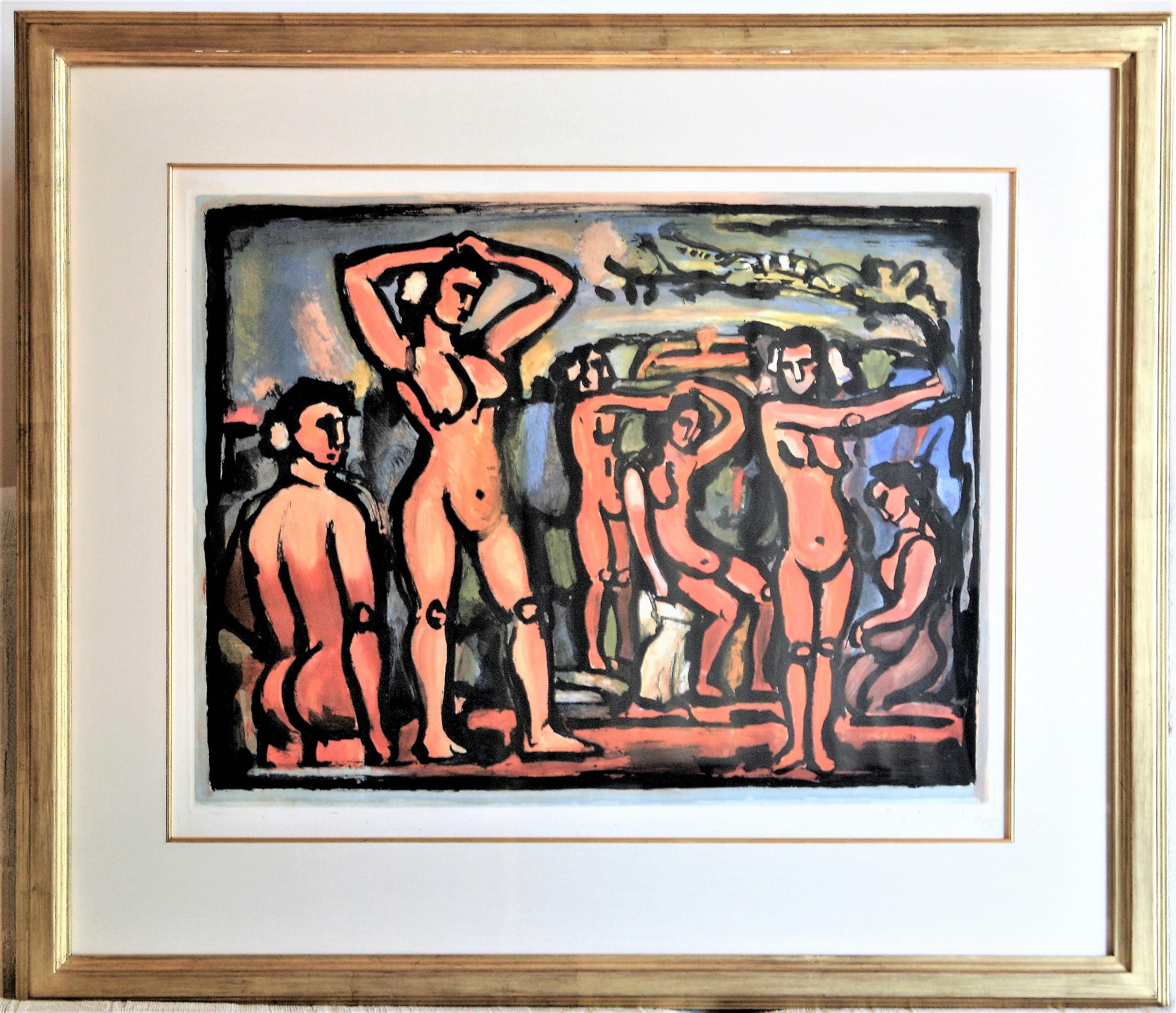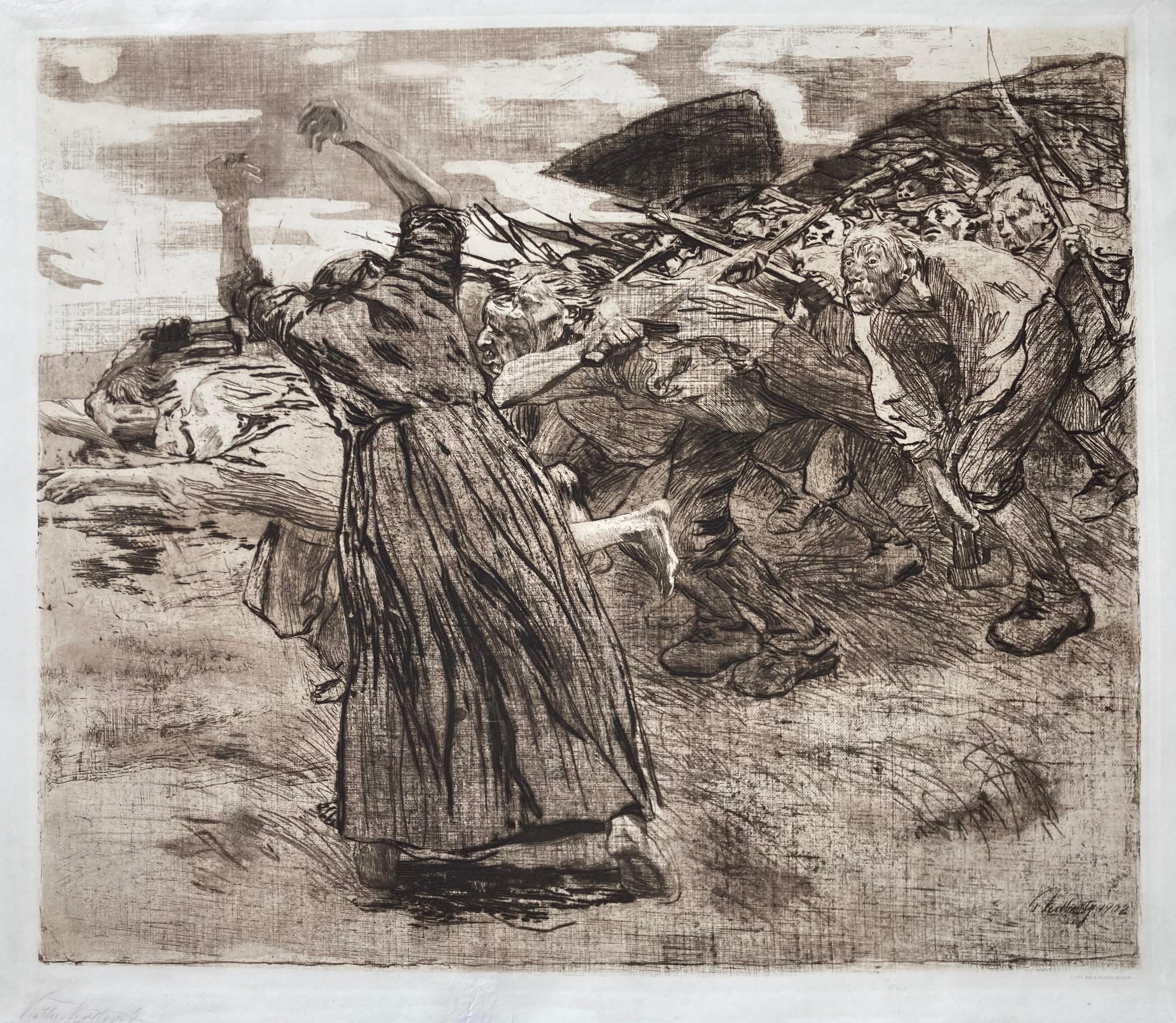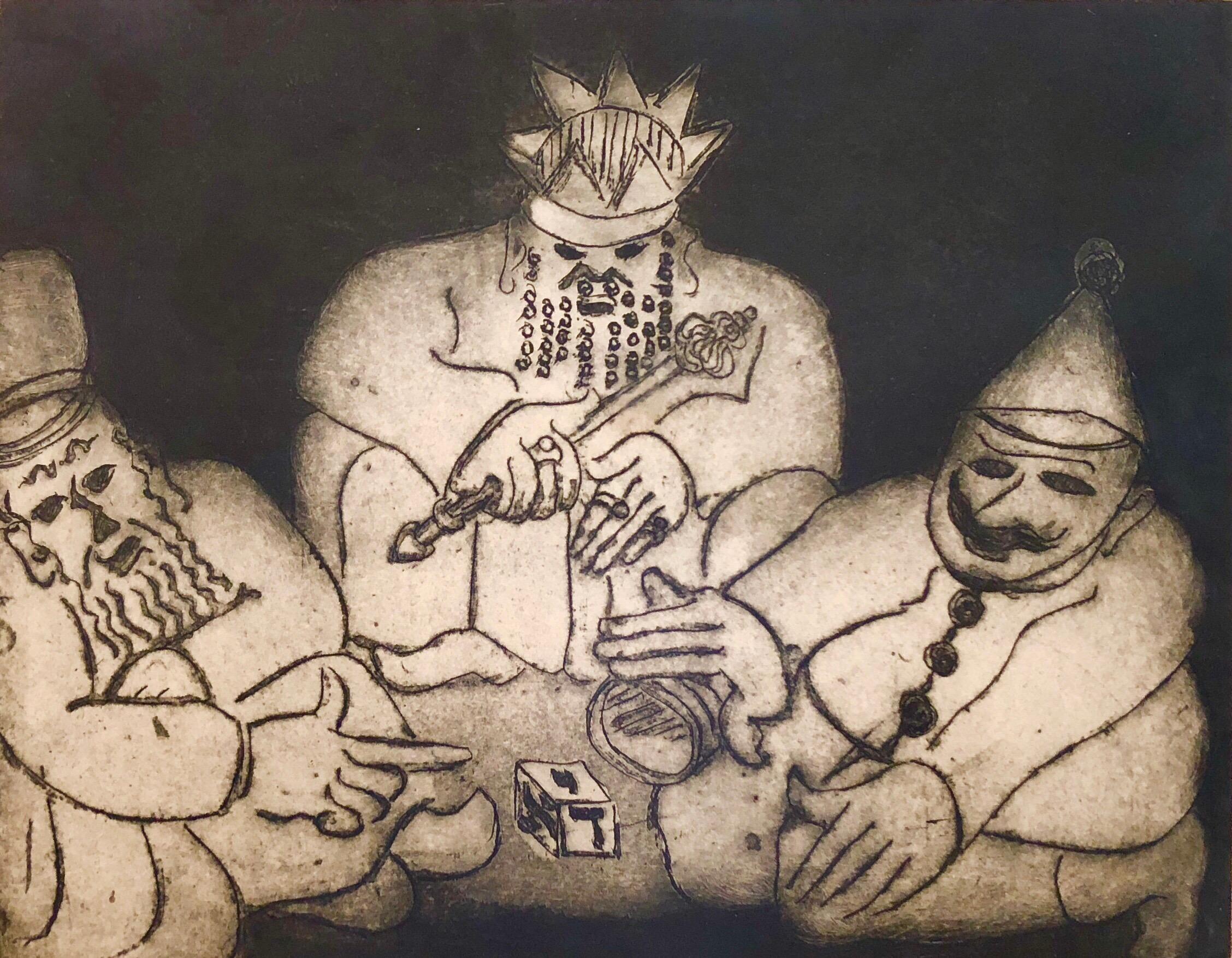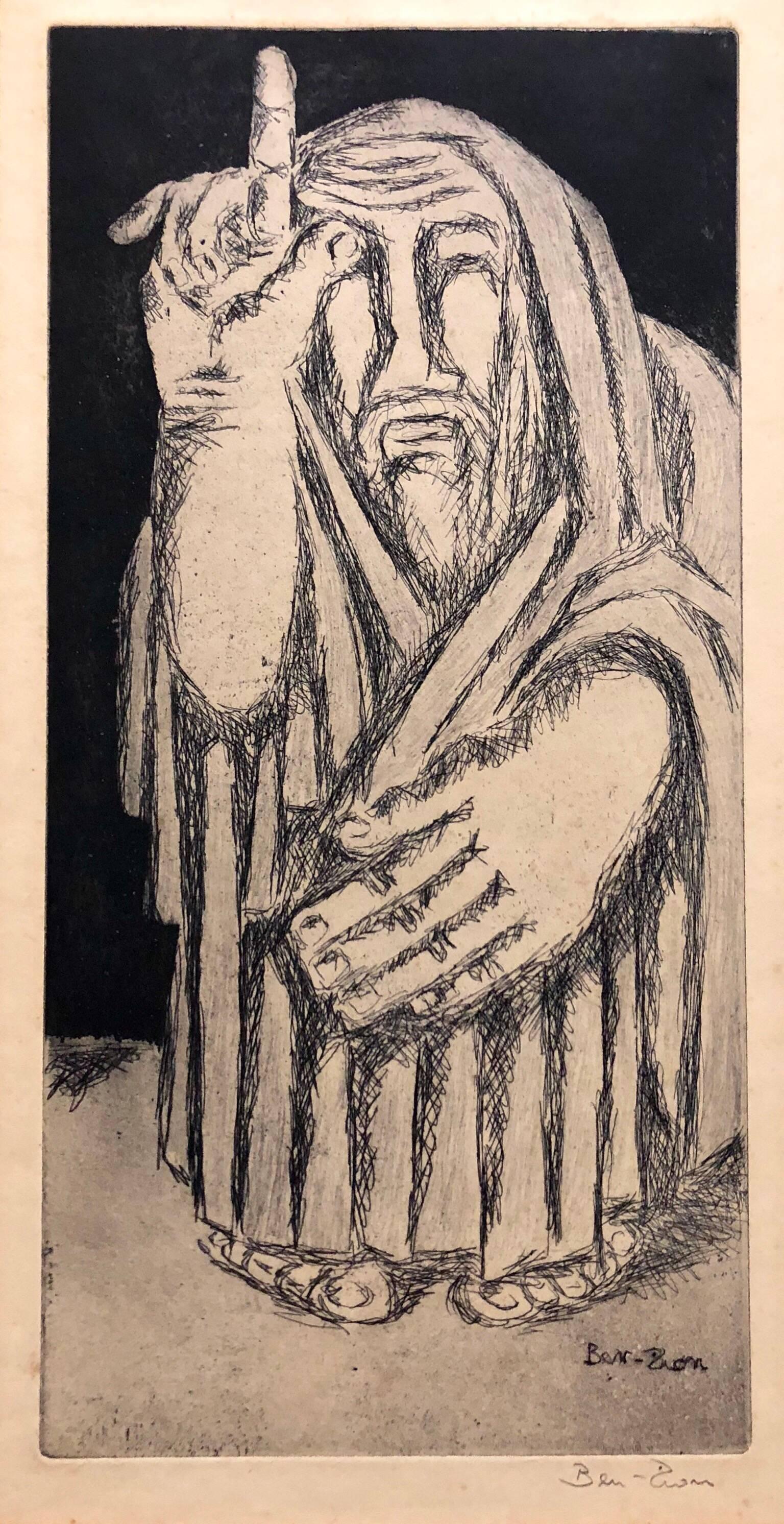Items Similar to Paul Klee Etching "Gefühle im Mai"
Want more images or videos?
Request additional images or videos from the seller
1 of 2
(after) Paul KleePaul Klee Etching "Gefühle im Mai"1926
1926
About the Item
Helio-etching on hand-made paper, 1926 by Paul Klee. Signatur is printed, lower center: Klee
From portfolio Paul Klee, Handzeichnungen 1921-1930; Here no 31.
Image: 4.09 x 7.52 in ( 10,4 x 19,1 cm ), Framed: 13.46 x 15.16 in ( 34,2 x 38,5 cm )
- Creator:(after) Paul Klee (1879 - 1940, German, Swiss)
- Creation Year:1926
- Dimensions:Height: 4.09 in (10.39 cm)Width: 7.52 in (19.11 cm)
- Medium:
- Movement & Style:
- Period:
- Condition:
- Gallery Location:Berlin, DE
- Reference Number:1stDibs: LU1841906653
About the Seller
4.1
Vetted Seller
These experienced sellers undergo a comprehensive evaluation by our team of in-house experts.
Established in 1981
1stDibs seller since 2013
130 sales on 1stDibs
Typical response time: 14 hours
- ShippingRetrieving quote...Ships From: Berlin, Germany
- Return PolicyA return for this item may be initiated within 7 days of delivery.
More From This SellerView All
- Paul Klee Etching Kinderbildnis ( ganze Figur )By (after) Paul KleeLocated in Berlin, DEA vintage helio-etching on hand-made paper, 1949, after a 1923 drawing by Paul Klee. From portfolio Paul Klee, Handzeichnungen 1921-1930; Here no 16 Image: 7.68 x 3.03 in ( 19,5 x 7...Category
Early 20th Century Expressionist Figurative Prints
MaterialsEtching
- Paul Klee Etching "Kostümierte Puppen"By (after) Paul KleeLocated in Berlin, DEHelio-etching on hand-made paper, 1922 by Paul Klee. Signatur is printed, lower center: Klee From portfolio Paul Klee, Handzeichnungen 1921-1930; Here no 8 Image: 7.56 x 5.63 in ( 19...Category
Early 20th Century Expressionist Figurative Prints
MaterialsEtching
- Paul Klee Etching "Familienspaziergang ( Tempo II )"By (after) Paul KleeLocated in Berlin, DEA vintage helio-etching on hand-made paper, 1930 after a drawing by Paul Klee. From portfolio Paul Klee, Handzeichnungen 1921-1930; Here no 70 Image: 5.12 x 7.48 in ( 13 x 19 cm ), ...Category
Mid-20th Century Expressionist Figurative Prints
MaterialsEtching
- Paul Klee Etching "Divergenz Kopf-Hände"By (after) Paul KleeLocated in Berlin, DEHelio-etching on hand-made paper, 1929 by Paul Klee. Signatur is printed, top right: Klee From portfolio Paul Klee, Handzeichnungen 1921-1930; Here no 58 Image: 5.75 x 7.05 in ( 14,6...Category
Early 20th Century Expressionist Figurative Prints
MaterialsEtching
- Paul Klee Etching "Nackte Frau"By (after) Paul KleeLocated in Berlin, DEHelio-etching on hand-made paper, 1926 by Paul Klee. Signatur is printed, top right: Klee From portfolio Paul Klee, Handzeichnungen 1921-1930; Here no 34 Image: 7.6 x 5.79 in ( 19,3 ...Category
Early 20th Century Expressionist Figurative Prints
MaterialsEtching
- Paul Klee Etching "Der Hut macht´s"By (after) Paul KleeLocated in Berlin, DEHelio-etching on hand-made paper, 1928 by Paul Klee. Signatur is printed, lower center: Klee From portfolio Paul Klee, Handzeichnungen 1921-1930; Here no 45 Image: 5.75 x 7.48 in ( 1...Category
Early 20th Century Expressionist Figurative Prints
MaterialsEtching
You May Also Like
- Rudolf v. Rittner as Florian Geyer - Last man standing -By Lovis CorinthLocated in Berlin, DELovis Corinth (1858 Tapiau - 1925 Zandvoort), Rudolf von Rittner as Florian Geyer, 1924 (Müller 854), drypoint signed in pencil. 20.4 × 14.2 (plate size), 37.7 × 30.6 cm (sheet size). Published by Karl Nierendorf, Berlin. Framed in a passepartout. - Strong, precise impression. Frame a little bit rubbed and with two small damages. About the artwork The knight is a leitmotif in Lovis Corinth's work, culminating in his Self-Portrait in Armour of 1914. Of all the paintings on this theme, Corinth most often depicted Florian Geyer. Descended from a Franconian noble family, he fought for the freedom of the peasants during the peasant wars of the Reformation, first diplomatically and then militarily, leading the legendary Schwarzen Haufen (Black Troops). The name derives from the black uniforms with which Geyer dressed the peasants willing to fight. During the Napoleonic occupation, the freedom fighter Florian Geyer was sung about by the Romantics, and the free corps Die Schwarze Schaar, founded in 1813 by Major von Lützow, succeeded the Schwarzer Haufen. It was against this historical background that Gerhard Hauptmann wrote the revolutionary drama Florian Geyer, which premiered at the Deutsches Theater in Berlin in 1896. While the actor Rudolf Rittner, who would later appear in Fritz Lang's films, initially played the role of Schäferhans, he took over the leading role in the new production at Berlin's Lessing Theatre in 1904, again directed by Emil Lessing, which established his fame as an actor. Hauptmann himself praised the acting. He wrote to Hugo von Hofmannsthal: "It went quite well with Florian Geyer. In any case, I had the great pleasure of seeing the play again in an admirable performance". And Lovis Corinth was so taken with Rittner's performance that he painted an oil portrait of him in the role of Florian Geyer in 1906. After two further graphic versions in 1915 and 1920/21, Corinth returned to the painting a year before his death and almost twenty years after the oil painting to create this graphic version in 1924. Even the inscription in the picture was taken over. This proves all the more the importance of the knight and freedom fighter for Corinth's self-image. The oil painting, in particular, proclaims the single-minded determination to fight to the last for the values defended, manifested in the oil painting by the tattered flag held out to the enemy. There is a parallel with Rainer Maria Rilke's 1899 story The Cornet, in which the protagonist goes down with the flag that he first saved at the risk of his life. Consequently, the portrait is also a self-portrait, and the knight's armour is not an academic costume or an ironic refraction, but an expression of Corinth's self-image, which also includes his self-representation as an artist. The Secession poster...Category
1920s Expressionist Figurative Prints
MaterialsEtching
- Automne (Autumn)By Georges RouaultLocated in Storrs, CTAutomne (Autumn). 1938. Aquatint print in colors. Chapon/Rouault 288C. 19 1/2 x 25 1/2 ( sheet 22 5/8 x 30 3/4). Edition 175, #58. Published by Vollard. A rich impression with brigh...Category
Mid-20th Century Expressionist Figurative Prints
MaterialsAquatint, Color
- LOSBRUCHBy Käthe KollwitzLocated in Santa Monica, CAKATHE KOLLWITZ (1867-1945) LOSBRUCH, 1903 (Klipstein 66 viii/xi). Etching and soft ground signed in pencil lower left below image slightly rubbed. Plate 5 from Bauernkrieg. Signed &...Category
Early 1900s Expressionist Figurative Prints
MaterialsEtching
- Judaica Jewish Shtetl Etching Yeshiva Talmudic Study Vintage Chassidic Art PrintBy Paul JeffayLocated in Surfside, FL"Qui a raison?" Chassidic boy, Yeshiva student with open book. Judaica, Jewish scenes from a ghetto. Saul Yaffie, a.k.a. Paul Jeffay, (1898–1957) was a Scottish Jewish artist. Known for his charming French street scenes as well as his judaica work. This is signed in the plate and dated 1931 in the print. This is done in a style similar to the works of the early Bezalel School artists Hermann Struck and Jakob Steinhardt. This lithograph, by artist Paul Jeffay depicts a Judaic Shtetl interior scene with great charm and sensitivity. Saul Yaffie was born in Blythswood, Glasgow on 29 April 1898. His mother was Kate Yaffie (née Karkonoski), and his father, Bernard Yaffie, was a master tailor. Like many Russian Jews, Kate and Bernard Yaffie fled persecution in Russia during a wave of anti-Jewish pogroms triggered by the assassination of Tsar Alexander II in 1881. Saul's father was naturalised as a British citizen by the time that Saul himself was three; a Bernard Yaffie is recorded as living at Abbotsford Place in the old Gorbals, where the young Saul spent the early years of his childhood. The Yaffies were not unique in their situation: the Gorbals was the centre of Scotland's Jewish community and home to a large proportion of Glasgow's immigrants throughout the early 20th century. Over time, there was a movement to some of the more affluent communities in Glasgow, such as Pollokshields and Garnethill, as many Jewish families gradually improved their social and economic situation. Like these, the Yaffies also experienced a time of good fortune, moving to a more agreeable address on Sinclair Drive, Cathcart as Bernard's tailoring business prospered. Saul attended day classes in drawing and painting, modelling, and life drawing at The Glasgow School of Art from 1912 to 1919. During the First World War, he was required to interrupt his studies to serve in the King's Own Scottish Borderers in 1916/17. Although subject to military conscription, Yaffie reached the rank of corporal during his service. Prior to his conscription Yaffie engaged in munitions work, something that was recorded in the GSA's student registers. The post-war economic depression that affected the country during the 1920s, also affected the Yaffie family directly: Bernard Yaffie's business suffered greatly, and the family eventually emigrated to Canada. Saul did not emigrate with his family, choosing instead to stay in Europe, and relocate to jazz age Paris where he continued his artistic practice. Now married, Saul sought to escape persecution in Europe by returning to the UK before the Second World War with his wife, Estusia. The two settled in Manchester, but returned to France after the war. In his memoires ‘Bronze in My Blood’, German-born sculptor Benno Schotz describes a Saul ‘Yaffe’, one of only three other Jewish students who attended The Glasgow School of Art at the time. (Schotz himself was exempt from joining the forces because he was ‘not yet a British subject’, and was engaged in war work in the drawing office of John Brown’s shipyards). On the outbreak of the war, Schotz writes, Yaffie won a poster competition to be displayed in Glasgow tramcars at the beginning of the 1914-18 war – his winning design depicted a woman with a child in her arms, fleeing from a fire behind her. While on leave from service, the young Saul told Schotz he had briefly been stationed in the same unit as Jewish American sculptor Jacob Epstein. This was most likely the 38th Battalion of the Royal Fusiliers, also known as ‘the Jewish Legion’, one of five Jewish battalions raised during WW1. ‘He told me how incongruous it was’, remembers Schotz, ‘to See Epstein scrubbing the floor of their hut, with a large diamond ring on his finger’. His work is included in the collection of the Ben Uri Museum in London along with Lucian Freud, David Bomberg, Mark Gertler, Josef Herman, Jankel Adler, Feliks Topolski...Category
20th Century Expressionist Interior Prints
MaterialsEtching
- Purim Holiday Scene Judaica Aquatint Etching American Modernist WPA ArtistBy Ben-Zion WeinmanLocated in Surfside, FLBorn in 1897, Ben-Zion Weinman celebrated his European Jewish heritage in his visual works as a sculptor, painter, and printmaker. Influenced by Spinoza, Knut Hamsun, and Wladyslaw Reymont, as well as Hebrew literature, Ben-Zion wrote poetry and essays that, like his visual work, attempt to reveal the deep “connection between man and the divine, and between man and earth.” An emigrant from the Ukraine, he came to the US in 1920. He wrote fairy tales and poems in Hebrew under the name Benzion Weinman, but when he began painting he dropped his last name and hyphenated his first, saying an artist needed only one name. Ben-Zion was a founding member of “The Ten: An Independent Group” The Ten” a 1930’s avant-garde group, Painted on anything handy. Ben-Zion often used cabinet...Category
Mid-20th Century Expressionist Figurative Prints
MaterialsEtching
- Biblical Prophet Etching American Modernist WPA ArtistBy Ben-Zion WeinmanLocated in Surfside, FLBorn in 1897, Ben-Zion Weinman celebrated his European Jewish heritage in his visual works as a sculptor, painter, and printmaker. Influenced by Spinoza, Knut Hamsun, and Wladyslaw Reymont, as well as Hebrew literature, Ben-Zion wrote poetry and essays that, like his visual work, attempt to reveal the deep “connection between man and the divine, and between man and earth.” An emigrant from the Ukraine, he came to the US in 1920. He wrote fairy tales and poems in Hebrew under the name Benzion Weinman, but when he began painting he dropped his last name and hyphenated his first, saying an artist needed only one name. Ben-Zion was a founding member of “The Ten: An Independent Group” The Ten” a 1930’s avant-garde group, Painted on anything handy. Ben-Zion often used cabinet...Category
Mid-20th Century Expressionist Figurative Prints
MaterialsEtching
Recently Viewed
View AllMore Ways To Browse
Vintage Hearts And Flowers
Vintage Women Faces
Retro Poster Reproductions
Dublin Prints
Etching Child
Queens Of Vintage
The Juggler
African American Lithographs
Historical Antiquities
Window Stay
Black And White Post Modern Paintings
Woodcut Print Portrait
Roman Architectural Engraving
Vintage Japanese Pop Art
Japanese Color Woodblock Print
Alexander Of Russia
Picasso Prints And Posters
Beach Lithographs
